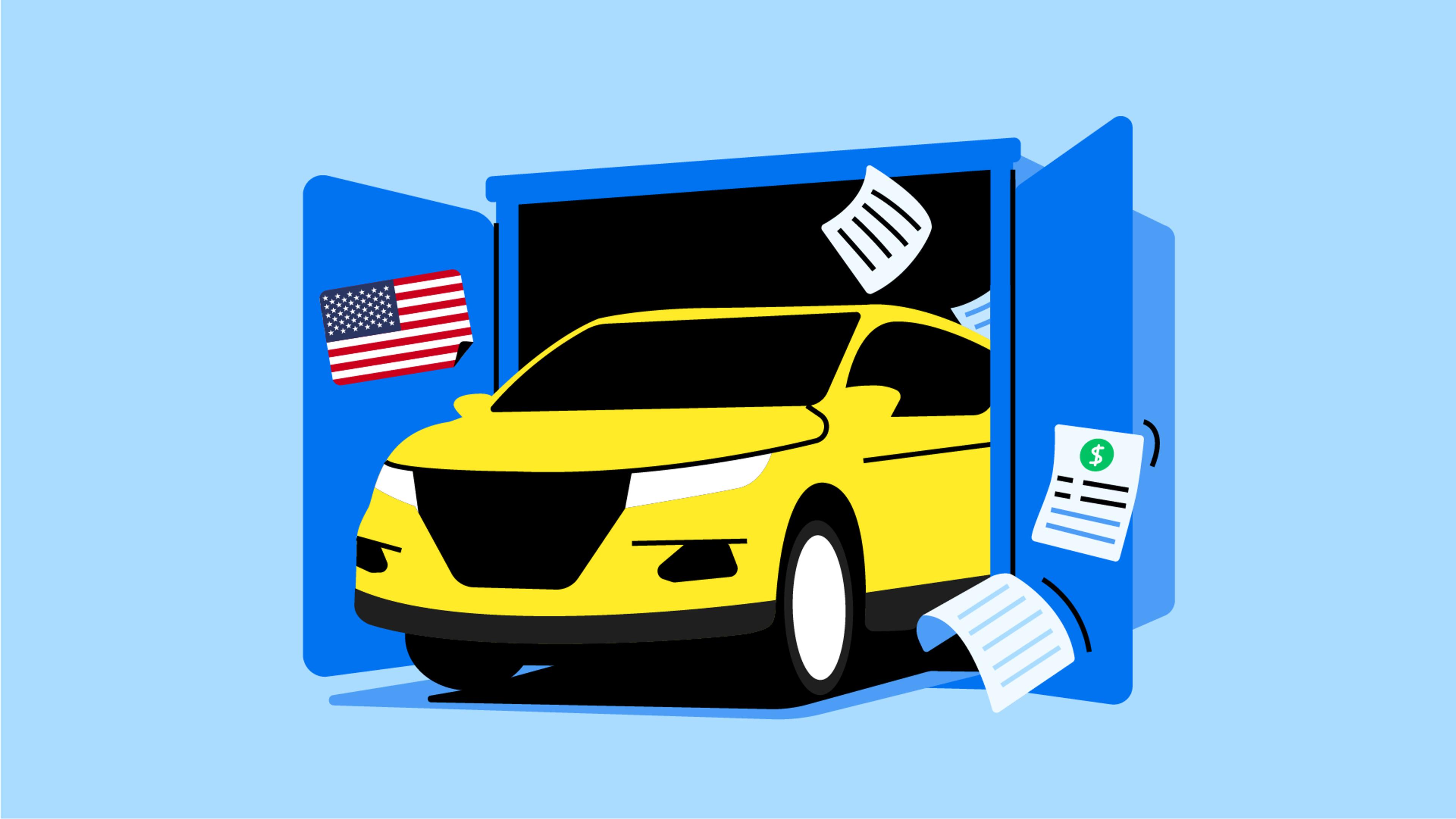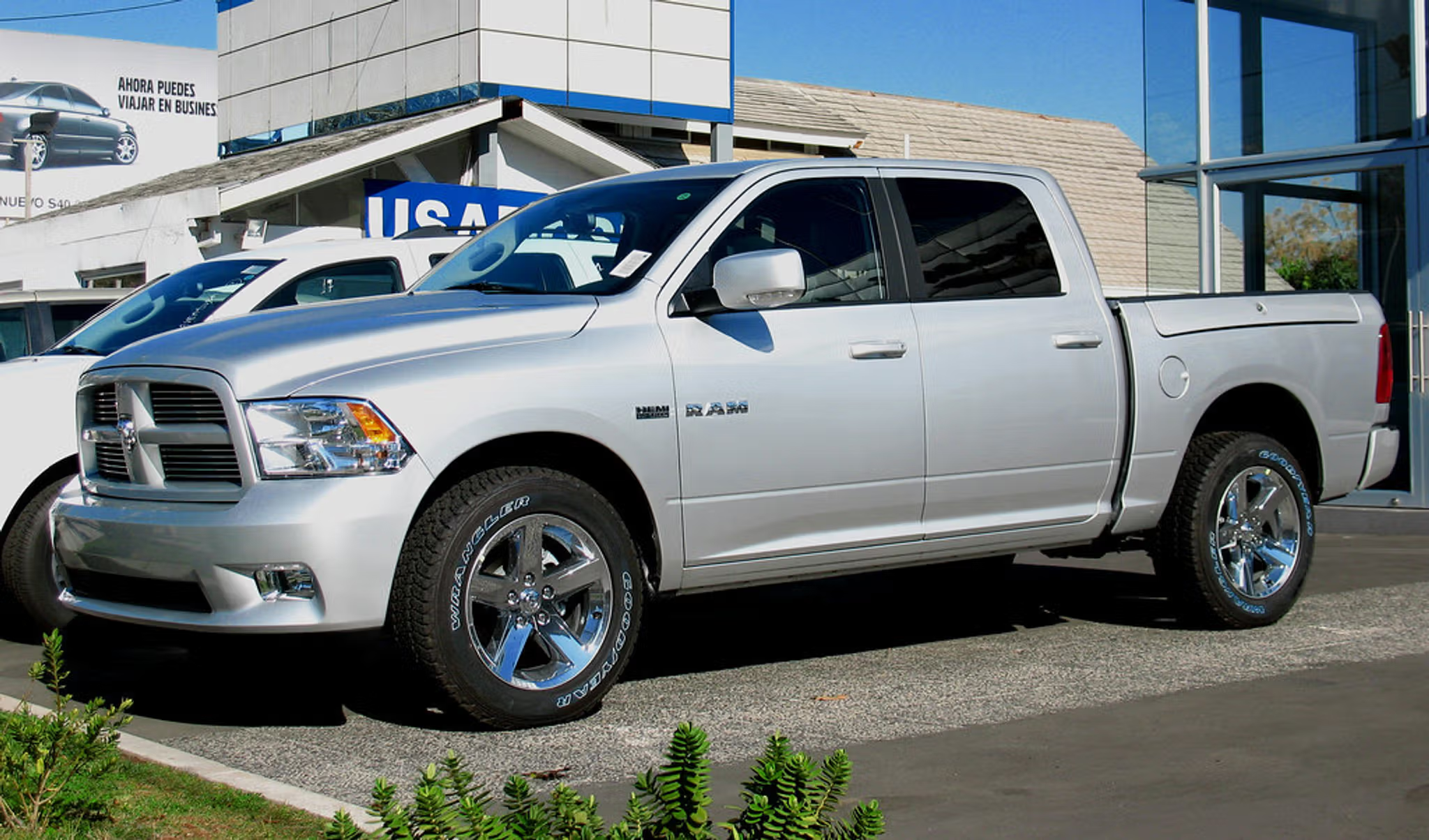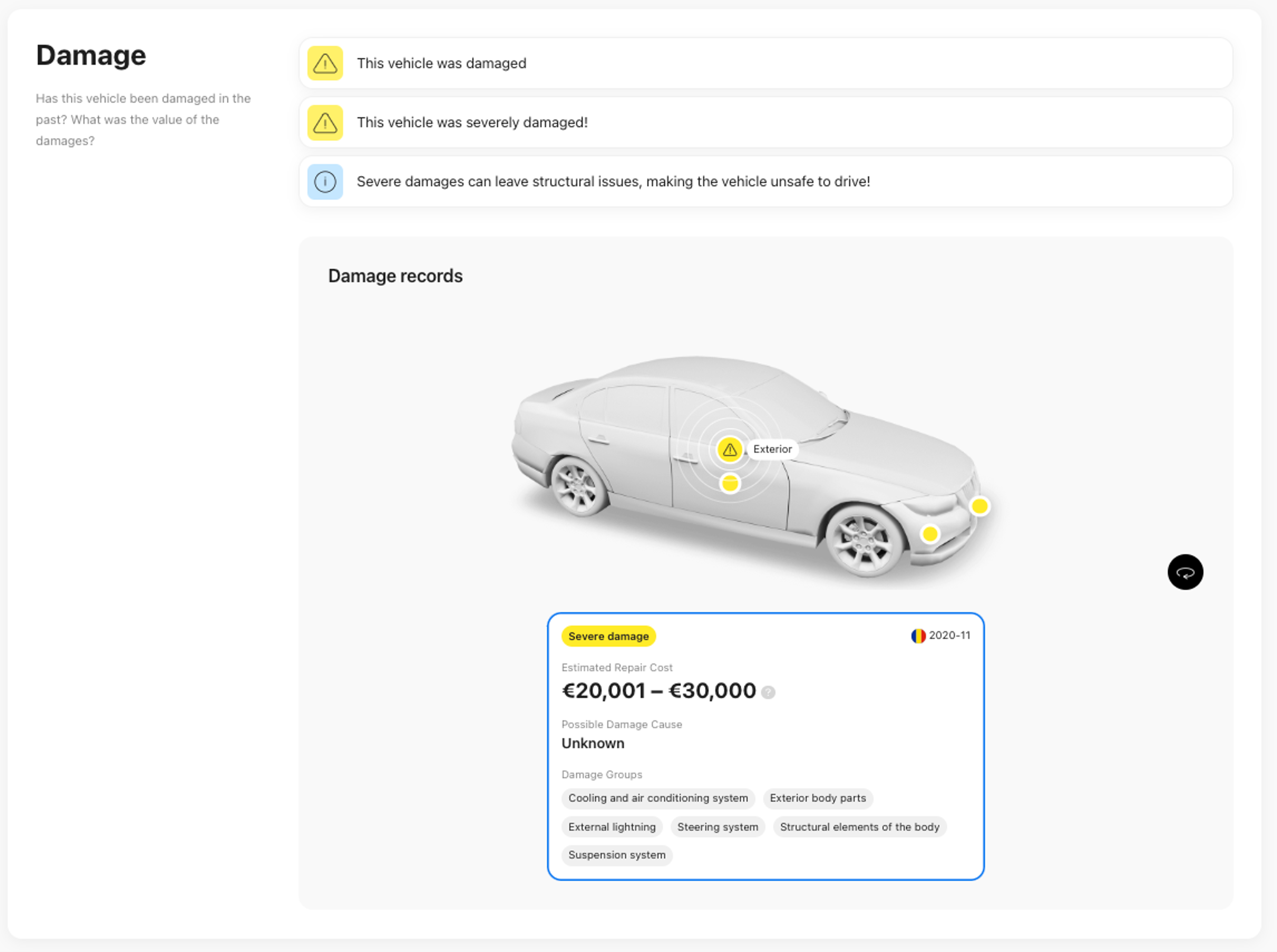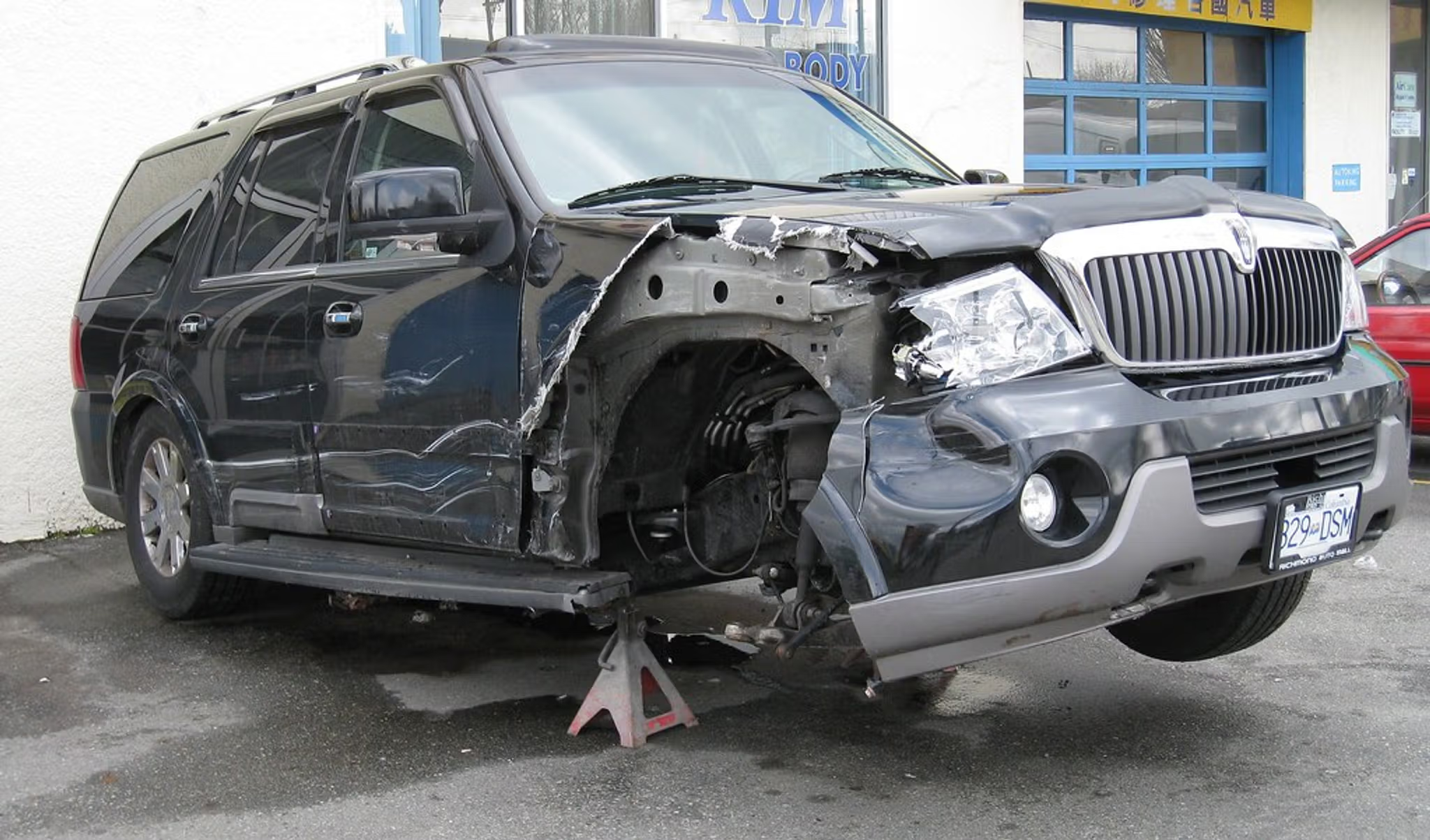
Buying and importing a used car from the USA may seem like a very complicated and risky process, but low prices and a wide selection of cars still attract people from all over the world.
Whether you're attracted to American muscle or the potential for a budget-friendly deal, buying a used car from the USA can be a compelling option. However, such opportunities come with challenges, including understanding regulations, checking vehicle histories, and ensuring the shipping goes well.
Let’s dive into the process of buying a used car from the USA, pointing out all the essential dos, don’ts, and tips to help you avoid the most common mistakes and get your purchase home safely.

Afraid of buying a wreck?
Check any VIN to learn a vehicle's history!
Step 1: Researching the used car market in the USA
It makes sense to begin your research with some casual internet browsing. Checking on various marketplaces and auction sites will give you a sense of what’s available. You’ll find the most popular car models, most common issues, and potential prices. Also, note how much information sellers provide about their cars and what additional services are available (such as shipping and inspection options).

Keep in mind that the options available in the US differ from other countries – there are very few diesel cars, and the engines are generally larger.
You can find used cars in the US in several types of businesses:
- Used car dealerships (CarMax, Carvana)
- Private-party marketplaces (eBay Motors, CarGurus, Craigslist)
- Classified car buying sites (Facebook marketplace)
- Salvage car auctions (Copart, IAAI)
Cars from used car dealerships will be in good condition, but they’ll also cost more. Considering transportation and other fees, the final price may be higher than expected.
Meanwhile, if you’re buying from a private seller, it’s highly recommended to have someone inspect the car to avoid hidden problems and scams.
Salvage car auctions are the most popular place to buy a used car from the USA. One of the best things about them is that they’re usually honest and provide all the issues upfront. While hiring an independent US-based expert to check your chosen vehicle is always a good idea, auctions often upload photos and even videos of any problems they discover.
All auction listings must include VIN numbers, allowing you to check the car’s history by entering the VIN on our website to learn about damage, mileage, title changes, and other important information.


Check your VIN
Avoid costly problems by checking a vehicle's history. Get a report instantly!
Step 2: Finding a reliable seller
When buying used cars, you can encounter fake ads, identity theft, title washing, and other types of scams. Therefore, make sure the online platforms and sellers you choose are well-known and reliable.
Be aware of red flags when browsing used car ads. For instance, some documents may be missing, sellers don't share the car’s VIN number or identify themselves, avoid answering questions directly, or the deal simply seems too good to be true. Make sure all the information is based on actual facts, and not the seller's promises.
If you’re going to buy from a dealership, make sure you read about the specific business to ensure their conditions are reasonable.
Step 3: Planning finances for buying a car from the USA
“What is the overall cost going to be?” is one of the most common questions asked by people who want to buy a used car from the USA for the first time. There's no straightforward answer, but it's useful to know what the final cost usually includes:
- The final price of the car
- Auction fees ($300-700)
- Transportation fees
- Customs fees
- Repair fees (the photos may help you understand which body panels and interior parts must be replaced, repaired, or repainted)
- Additional expenses: international bank fees, cargo damage protection, and destination charges.

Many auctions will start the engine and briefly test the gearbox. However, you’ll still likely find more issues after a thorough inspection once you get the car, so prepare your wallet for the worst-case scenario.
You may want to use a licensed car broker service to ensure it all goes smoothly. Brokers take over most of the work by communicating with sellers, planning transportation, and providing the required documentation. Unlike regular buyers, they’re aware of all potential fees, issues, and solutions. A broker’s commission rate varies between a few hundred and a few thousand dollars, depending on the car.
Step 4: Shipping and importing the car
The roll-on/roll-off (RORO) method is the most common option for shipping cars from the United States to Europe. With RORO, vehicles are driven on and off the ship on their wheels or using a platform vehicle.
The lift-on/lift-off (LOLO) shipping is also common, especially for severely damaged vehicles, because the cargo is loaded and unloaded using an on-board crane. If you’re importing a car to Europe, its transportation will take at least a month.

However, this only covers sea transportation – you’ll still have to bring the car to a port and collect it from another port later on. Experienced buyers often look for vehicles closer to ports, reducing transportation costs.
Once the vehicle is delivered, there are usually import-related taxes that vary by country. For instance, the duty may be around 10%. Also, all European and many other countries charge VAT on goods and services, which can go up to 35.54%. Brokers typically know ways to minimize import costs.
The documentation process is another reason to consider expert help. Depending on your country, you’ll need various papers to legalize your purchase, often including a U.S. title, a bilingual sales contract, and an origin verification decision. Also, if you’re importing a car to an EU country, you may need a credible written document of compliance with EU standards.
Step 5: Finalizing the purchase and taking possession of the car
Once you find a car you like, you may have many questions before making such an expensive purchase.
First of all, don’t try to negotiate the price if you’re buying a car from an auction. It’s often said that “If you don’t want it or can’t afford it, don’t bid” because the winning bid is the final price of the car and shouldn’t be negotiable. However, if you’re dealing with a private seller or a dealership, you may be able to haggle the price by pointing out unmentioned issues.
Bear in mind that different auction sites may offer different payment options, so make sure to review what's available before bidding on a vehicle. Most major auctions offer several payment methods, such as:
- Wire transfer
- Money order
- Cashier's check
- Credit/debit card
- Financing options
The time to set up a payment is usually limited to a few business days. The complimentary storage period is also limited, so get everything rolling as soon as your bid is accepted.
When buying a car from an auction, you can only pick it up after it’s paid in full, which usually includes a few additional fees, such as a buyer fee, internet bid fee, and gate fee. Learn about all the additional fees before bidding to avoid unexpected expenses.
Once everything is paid, the car is yours. However, you still have to arrange the loading, transportation, unloading, repairs, and required modifications to meet European traffic standards.
Buying a car from the USA for the first time is an exciting experience. While you should understand how everything works and where you’re putting your money, don’t expect to deal with everything yourself. We definitely recommend hiring a professional broker to take care of the process, taking a burden off your shoulders and leaving you some room to observe.
Frequently asked questions

Article by
Evaldas Zabitis
Evaldas has been writing since middle school and has had a passion for cars for as long as he can remember. Right after getting his driver’s license, he spent all of his savings on shoddy cars so he could spend time fixing, driving, and selling them. Evaldas is always interested in automotive technical innovations and is an active participant in automotive community discussions.
